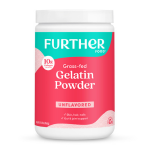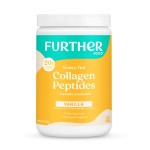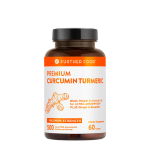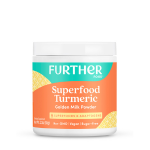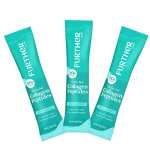Worried About Your Cholesterol? Lower It Naturally with These Smart Lifestyle Shifts

During your annual checkup, you will likely have a blood test called a lipid panel. This tests your cholesterol levels and can be a good indicator of your heart and blood vessel health, as well as your risk for having a heart attack or stroke. There are four numbers that make up your cholesterol levels: total cholesterol, LDL, HDL, and triglycerides. What exactly do they mean? We’re glad you asked!
Total Cholesterol: This is the sum of your HDL, LDL, triglycerides and other lipids, and should be less than 200.
LDL: Defined as low density lipoprotein, this is considered “bad” cholesterol. LDL deposits cholesterol on your artery walls where it builds up and can block blood flow, eventually leading to a heart attack or stroke. Your LDL levels should be between 100-120, and ideally even less than 100.
HDL: High density lipoprotein is your “good” cholesterol. HDL collects cholesterol and delivers it back to the liver, where it is processed and eliminated. This keeps your arteries clean. You want your HDL level to be high, greater than 60.
Triglycerides: These are fat molecules that float around in your blood and store any excess calories that you eat as fat. High triglycerides are associated with a greater risk of heart disease. Ideally, this number should be less than 150.
Are your numbers out of range? Changing your diet and lifestyle can make a difference, though it may take about three to six months to see a difference.
Here are some changes you can make to improve your cholesterol levels:
Quit smoking. This results in immediate, positive changes to your cholesterol. Ongoing studies show that smokers who kick the bad habit see a rise in HDL and drop in LDL within weeks and months of being smoke-free.
Maintain a healthy weight. Keeping off excess pounds through smart eating choices and regular exercise helps stabilize cholesterol levels. If you need to lose weight, do it slowly, aiming to drop one to two pounds per week.
Move more. Aim for 30 minutes of exercise per day. Break this up into smaller increments if needed. While going to the gym or working out at home is great, you can also add in more physical activity to your daily life. Take the stairs instead of the elevator, park far away at the store, or take a walk at lunch. Every little bit counts!
Increase your fiber intake. Not only does fiber help lower your LDL and raise your HDL, it helps you feel full for a longer period of time, which can cause you to eat less overall. You can find fiber in vegetables, fruits, whole grains, nuts, seeds and beans. Check out all our high fiber recipes here!
Eat fewer refined carbohydrates and more whole grains. Foods such as white bread, white pasta and white rice are refined, meaning they’re comprised of mostly sugar with little nutritional benefit. Instead, choose whole grains like whole wheat bread, whole wheat pasta, brown rice, quinoa, farro, barley and oatmeal — they don’t have added sugars and are rich in fiber.
Consume less added sugar. Certain drinks (soda, juice, tea) and foods (cookies, cakes, doughnuts, candy, ice cream) add a lot of unnecessary sugar in our diets, which is quickly converted into triglycerides. Consuming these contributes to being overweight, as well as unhealthy cholesterol levels. Drink mostly water, and try eating dessert less often.
Eat more healthy fats. Unsaturated fats, also known as poly- and monounsaturated fats, are heart healthy and can improve your cholesterol profile. You can find them in coldwater fish like salmon and tuna, olive and canola oils, avocado, nuts, flax, and chia and hemp seeds.
Eliminate trans fats. This is mostly a man-made fat, where the structure of fat is changed so that foods can be shelf-stable for a long time. Great for the food industry, not good for us. Ideally, you’ll want to cut this fat out completely. Read the ingredients label. If you see the word “hydrogenated” or “partially hydrogenated,” it’s trans fat. Look for it in some brands of peanut butter, crackers, non-dairy creamers and packaged desserts.
Watch out for saturated fat, too. Saturated fat is found mostly in animal products (meats and dairy). Choose lean cuts of meat and low-fat dairy products. Limit tropical oils (coconut and palm oil), as these are high in saturated fat.
Cut out fried foods. Frying foods adds a lot of fat and calories. Also, some restaurants use frying oil that contains trans fat. Instead, prepare foods by grilling, baking, broiling, steaming or sautéing.
Consume alcohol in moderation. Alcohol, when consumed in moderation (one drink per day for women; two per day for men), can raise your HDL, the number you want to be high. However, if you don’t drink, it is not recommended to start just to raise your HDL. Also, remember that alcohol can provide a lot of extra calories.
Managing your cholesterol levels takes some effort, just like with reaching any other health goal. Don’t read this and think, “I can never have steak or fried chicken again.” The idea is to be aware of what’s in your food and make smart choices with that information. It’s all about balance and, hopefully, by making some changes in your diet and lifestyle, you’ll find an ideal balance in your cholesterol numbers too.
Looking for some cholesterol-friendly recipe inspiration? Try this Bright Lentil Salad or Lemongrass Turkey & Roasted Sweet Potato Salad for a great lunch or dinner option chock-full of fiber and nutrients, or for a fun alternative to frying try Almond Crusted Chicken. A healthy dessert? Bake these Sweet Potato Chocolate Brownies and Chocolate Banana Avocado Pie (Paleo).
Want to learn more?
What’s Cholesterol Got to Do With a Healthy Heart? More Than You Might Think
Got Diabetes? 12 Amazing Superfoods You Need to Eat Now
15 Clean-Eating Recipes That’ll Make You Ditch That Bag of Chips
Note: PLEASE consult with your doctor before making any changes to your diet or medications. The material on this site is provided for educational purposes only, and is not to be used for medical advice, diagnosis or treatment.










